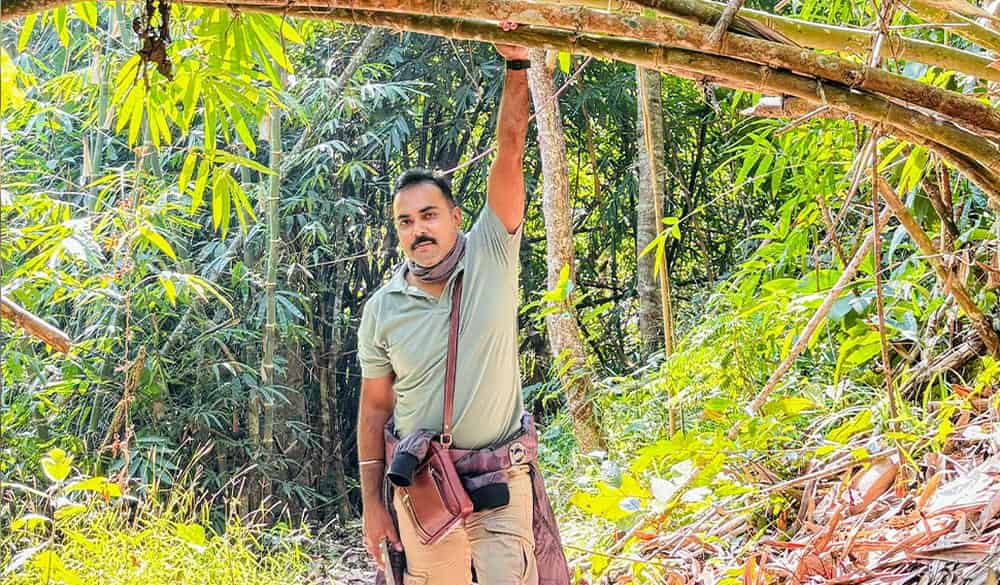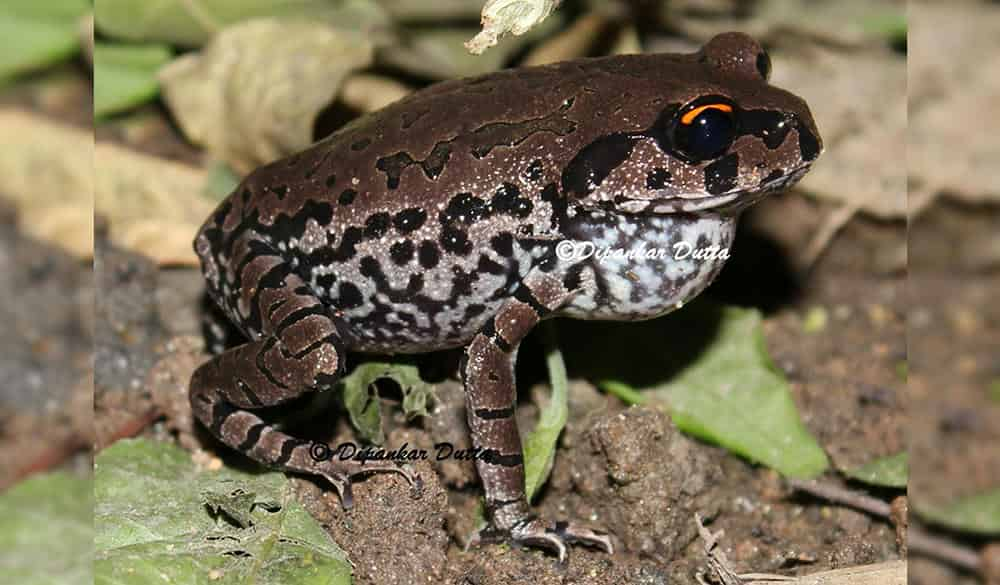New frog species discovered in Assam named after Arya Vidyapeeth College; USTM scientist among research team

A new species of frog has been discovered in the Garbhanga Reserve Forest of Western Assam and adjoining Ri-Bhoi District in Meghalaya, adding to the growing list of amphibians unique to Northeast India. The species, Leptobrachium aryatium, was identified by a team of four researchers, including Dr. Dipankar Dutta, Assistant Professor in the Department of Zoology at the University of Science and Technology Meghalaya (USTM).
The finding was officially published in the international journal Zootaxa on April 14 and marks a significant step forward in understanding amphibian biodiversity in the region. The frog’s distinct morphological traits set it apart from others in the Leptobrachium genus, contributing to the global understanding of speciation and evolution in these amphibians.
In a unique gesture, the researchers named the frog Leptobrachium aryatium as a tribute to Arya Vidyapeeth College (Autonomous), Guwahati, their alma mater. The college’s Herpetology Laboratory has played a pioneering role in amphibian research in India and enjoys both national and international recognition. All four members of the team—Dr. Dutta, Dr. Jayaditya Purkayastha, Dr. Jayanta Gogoi, and Dr. Saibal Sengupta—have academic ties to the college.
Dr. Dutta traced the journey of the discovery back to 2001, when his mentor, Dr. Saibal Sengupta, first reported the frog—then believed to be Leptobrachium smithi—marking the first instance of this genus in India. Encouraged by his mentor, Dr. Dutta continued the research during his PhD, dedicating years to studying the frog’s taxonomy, breeding behaviour, life cycle, vocalizations, diet, habitat range, and genetic structure.
“This frog became central to my academic journey,” said Dr. Dutta. “Naming it after Arya Vidyapeeth College felt like the most fitting way to honour where it all started.”

He also expressed his gratitude to USTM for its logistical and institutional support, which enabled the completion of the extensive fieldwork and lab research that led to this breakthrough.
Beyond the scientific importance, the discovery underscores the ecological significance of the Garbhanga Reserve Forest and surrounding areas. The researchers emphasized the urgent need to preserve such biodiverse ecosystems, which continue to yield critical insights into species evolution and conservation.
With this discovery, Leptobrachium aryatium becomes a symbol of both scientific persistence and institutional legacy—highlighting what long-term research and academic collaboration can achieve in biodiversity hotspots like Northeast India.

Leave a Reply